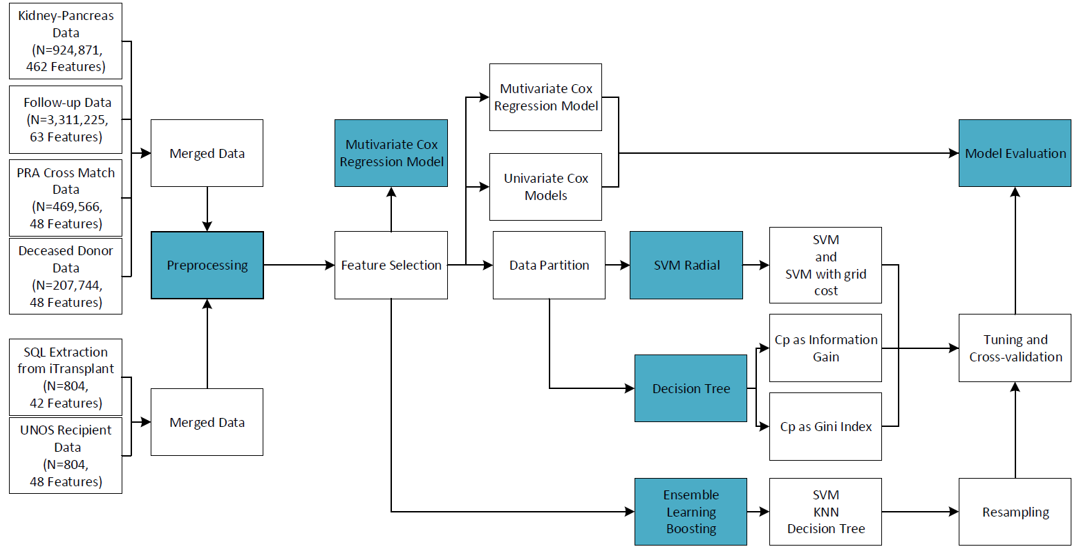Machine Learning Approaches for Post-transplant Kidney Outcome Prediction
H. Ghali1, D. Won1, S. Yoon1, A. Friedman2
1Systems Science and Industrial Engineering, SUNY Binghamton, Binghamton, NY, 2LiveOnNY, New York, NY
Meeting: 2021 American Transplant Congress
Abstract number: 1294
Keywords: Graft survival, Kidney transplantation, Outcome, Pulsatile preservation
Topic: Clinical Science » Organ Inclusive » Machine Learning, Artificial Intelligence and Social Media in Transplantation
Session Information
Session Name: Machine Learning, Artificial Intelligence and Social Media in Transplantation
Session Type: Poster Abstract
Session Date & Time: None. Available on demand.
Location: Virtual
*Purpose: Determine a robust prediction model for kidney graft survival based on analyzing a combination of decisive factors such as donor and recipient characteristics, biopsy, and perfusion machine parameters.
*Methods: A collection of 632 locally transplanted kidneys that were recovered from deceased donors and pumped (1/1/17 – 12/31/18) were analyzed using data from an organ procurement organization (OPO) and UNOS data (see figure). A Consolidation of data preprocessing techniques, namely predictive mean matching and feature selection were employed. The data was subsequently utilized first in a survival analysis through univariate and multivariate Cox regression. A selection of machine learning algorithms was applied to the same dataset to develop a model for predicting kidney graft survival.
*Results: The primary cox regression model resulted in a concordance index of 0.952, with DCD as the main predictor for graft survival (p= 0.004). Support vector machine (SVM: radial and grid of multiple cost parameters), decision tree (information gain and gini index), and ensemble learning (boosting) algorithms were applied. As a result, the ensemble learning outperformed all models by 93.7% accuracy (see table).
*Conclusions: The model, that we developed, will provide an insight into making an informed decision about the transplant of kidneys considering their predicted final outcome. Furthermore, it could be used by OPOs to increase their organ utilization and possibly lowering the discard rate of kidneys.
| Metrics | SVM Radial | SVM Grid | Decision Tree | Decision Tree Gini | Boosting |
| Accuracy | 0.925 | 0.872 | 0.819 | 0.819 | 0.937 |
| Sensitivity | 0.882 | 0.794 | 0.588 | 0.588 | 0.895 |
| Specificity | 0.950 | 0.916 | 0.950 | 0.950 | 0.956 |
To cite this abstract in AMA style:
Ghali H, Won D, Yoon S, Friedman A. Machine Learning Approaches for Post-transplant Kidney Outcome Prediction [abstract]. Am J Transplant. 2021; 21 (suppl 3). https://atcmeetingabstracts.com/abstract/machine-learning-approaches-for-post-transplant-kidney-outcome-prediction/. Accessed December 18, 2025.« Back to 2021 American Transplant Congress

